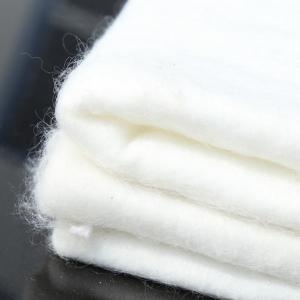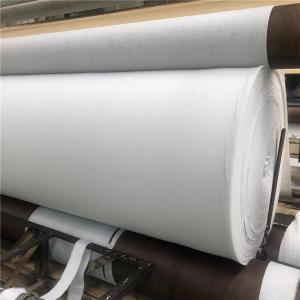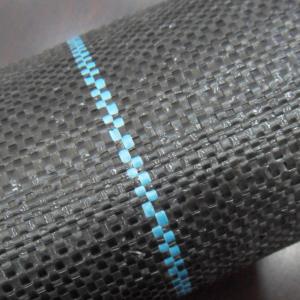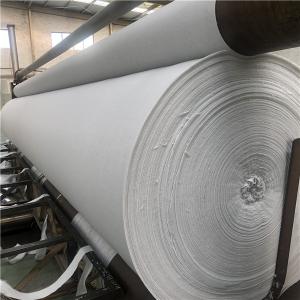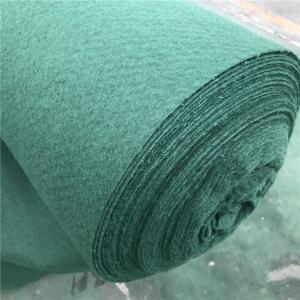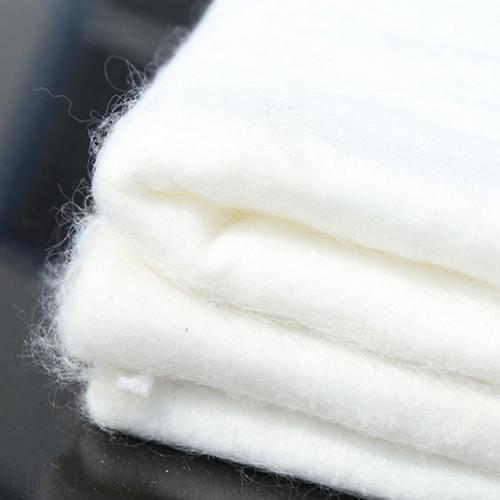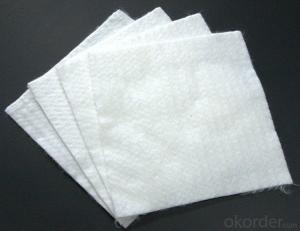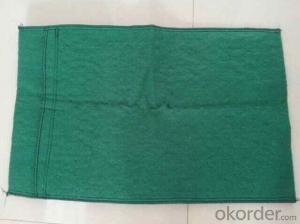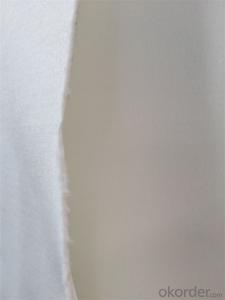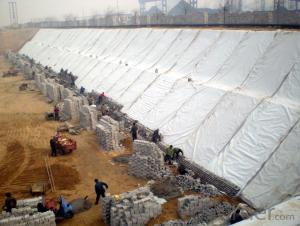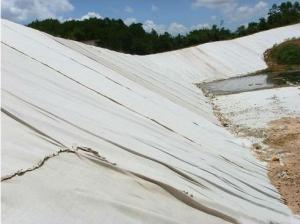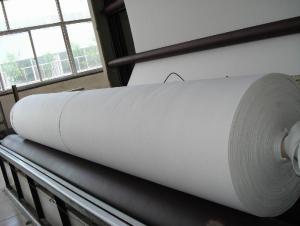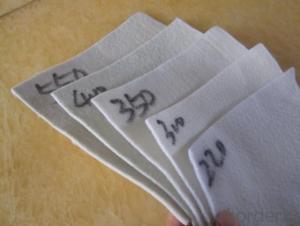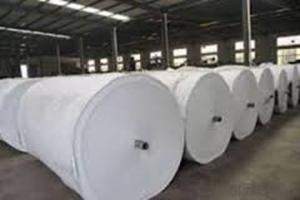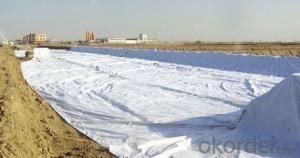Geotextiles Sub - Various Non-Woven Geotextile for Construction
- Loading Port:
- Guangzhou
- Payment Terms:
- TT or LC
- Min Order Qty:
- 10 m²
- Supply Capability:
- 999999 m²/month
OKorder Service Pledge
OKorder Financial Service
You Might Also Like
We provide various parameters and types of geotextiles, including filament non-woven geotextile, Non Woven Polypropylene Geotextile, staple geotextile, needle punched non-woven geotextile, polypropylene non-woven geotextile, inverted filter geotextile, woven geotextile, curing geotextile, etc. We have a variety of standard specifications of geotextiles, and can also provide you with specific specifications of geotextile production. If you want to purchase, we will provide samples and mail them to you, and finally we will supply for you at the wholesale price of the manufacturer. Because different parameters have different prices, if you want to know the detailed parameters and prices, please contact us to obtain the sample book.
Product specification: 100g/㎡~800g/㎡
Package specification: 1 m-7 m wide; Length: 50m-100m (according to customer requirements)
What is geotextile?
Geotextiles, also known as geotextiles, are permeable geosynthetics made of synthetic fibers through needle punching or weaving. Geotextile is one of the new geosynthetics. The finished product is cloth, generally 4-6 meters wide and 50-100 meters long. Geotextiles are divided into woven geotextiles and non-woven filament geotextiles.
Characteristics of geotextile
1. High strength, due to the use of plastic fiber, it can maintain full strength and elongation under dry and wet conditions.
2. Corrosion resistance. It can resist corrosion for a long time in soil and water with different pH values.
3. Water permeability is good because there are gaps between fibers, so it has good water permeability.
4. Good anti microbial property will not damage microorganisms and insects.
5. The construction is convenient. Because the material is light and soft, the transportation, laying and construction are convenient.
6. Complete specifications: width up to 9 meters. It is the widest product in China, and the mass per unit area is 100-1000g/m2.
Use of geotextile
It is widely used in water conservancy, electric power, mine, highway, railway and other geotechnical projects:
l. Filter material separated by soil layer;
2. Drainage materials for mineral processing of reservoirs and mines, and drainage materials for foundation of high-rise buildings;
3. Anti scour materials for river dams and slope protection;
4. Reinforcing materials for subgrade of railway, highway and airport runways, and reinforcing materials for road construction in marshland;
5. Frost and frost resistant thermal insulation materials;
6. Anti cracking materials for asphalt pavement.
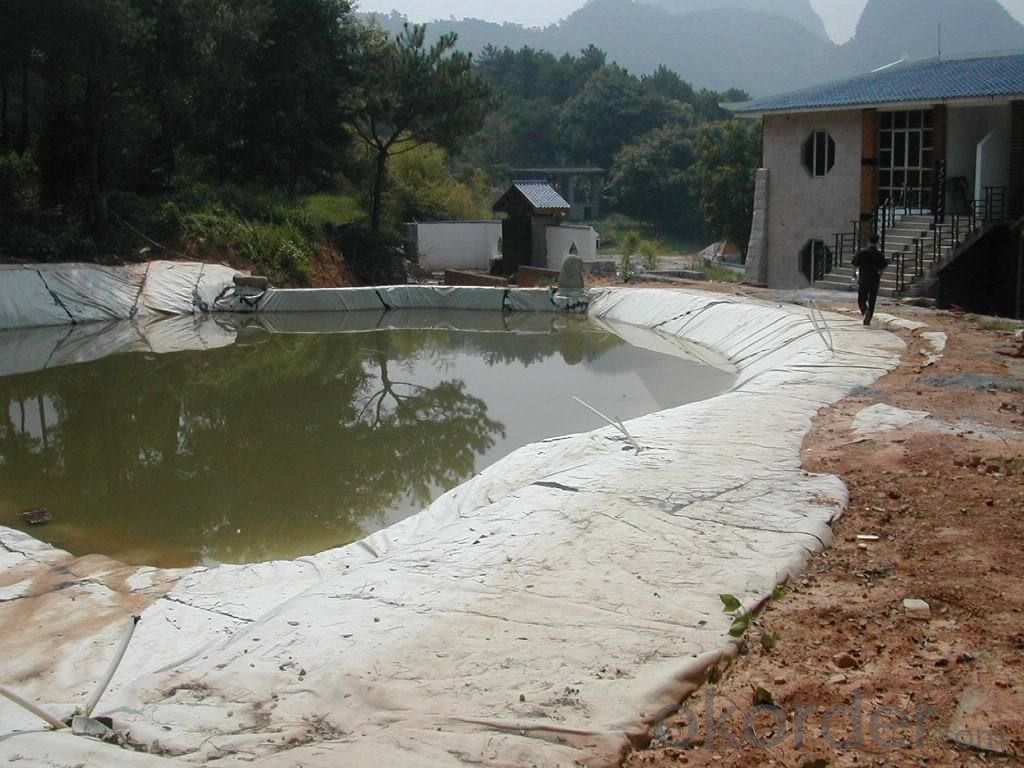
Application field of geotextile
l. It is used as reinforcement in the backfilling of retaining wall or for anchoring the panel of retaining wall. Build wrapped retaining wall or abutment.
2. Reinforce the flexible pavement, repair the cracks on the road, and prevent the pavement from reflecting cracks.
3. Increase the stability of gravel slope and reinforced soil to prevent water and soil loss and frost damage of soil mass at low temperature.
4. The isolation layer between ballast and subgrade, or between subgrade and soft foundation.
5. The isolation layer between artificial fill, rockfill or material yard and foundation, and the isolation between different frozen soil layers. Filtration and reinforcement.
6. The filter layer of the upstream dam surface at the initial stage of the ash storage dam or tailings dam, and the filter layer of the drainage system in the backfill soil of the retaining wall.
7. Filter layer around the drainage pipe or gravel drainage ditch.
8. The filter layer of water well, relief well or baroclinic pipe in hydraulic engineering.
9. The geotextile isolation layer between the highway, airport, railway road and artificial rockfill and the foundation.
10. The earth dam is drained vertically or horizontally and buried in the soil to dissipate the pore water pressure.
11. The drainage behind the impervious geomembrane or under the concrete cover in the earth dam or earth embankment.
12. The seepage around the tunnel shall be eliminated to reduce the external water pressure on the lining and the seepage around the buildings.
13. Drainage of artificial fill ground sports ground.
14. Roads (including temporary roads), railways, embankments, earth rock dams, airports, sports grounds and other projects are used to strengthen soft foundations.
Classification of geotextiles
Short fiber needle punched nonwoven geotextile can be divided into polyester, polypropylene, nylon, vinylon, ethylene and other needle punched nonwoven geotextiles according to raw materials; It can be divided into ordinary type and composite type according to structure. The varieties of staple fiber needle punched nonwoven geotextiles are designed by the production department according to the market demand.
Laying method of geotextile
1. Manual roll paving shall be used, and the cloth surface shall be flat with appropriate deformation allowance.
2. The installation of filament or staple geotextile usually adopts several methods, such as lapping, stitching and welding. The width of stitching and welding is generally more than 0.1m, and the lap width is generally more than 0.2m. Geotextiles that may be exposed for a long time shall be welded or stitched.
3. Sewing of geotextile: All sewing must be continuous (for example, spot sewing is not allowed). The geotextile must overlap at least 150 mm before overlapping. The minimum distance between the needle and the selvage (the exposed edge of the material) shall be at least 25 mm. The sewn geotextile joint most includes one line of linear locking chain joint method. The suture used shall be a resin material with a minimum tension of more than 60N, and have the chemical corrosion resistance and ultraviolet resistance equivalent to or beyond that of geotextile. Any "missing needle" on the sewn geotextile must be re sewn at the affected place. Corresponding measures must be taken to prevent soil, particulate matter or foreign matter from entering the geotextile layer after installation.
4. During construction, the geotextile on the geomembrane shall be naturally lapped, and the geotextile on the upper layer of the geomembrane shall be welded by seam or hot air. Hot air welding is the preferred method for the connection of filament geotextile, that is, the hot air gun is used to heat the connection of two pieces of cloth at an instant of high temperature, so that their parts can reach the melting state, and a certain external force is immediately used to make them firmly bonded together. In the case that thermal bonding cannot be carried out in wet (rainy and snowy) weather, another method - suture connection method shall be adopted for geotextile, that is, special sewing machine shall be used for double suture connection, and chemical ultraviolet resistant suture shall be used. The minimum width is 10cm when sewing, 20cm when natural lapping and 20cm when hot air welding.
5. For the sewing, the suture with the same quality as the geotextile shall be used, and the suture shall be made of materials with stronger resistance to chemical damage and ultraviolet light.
6. After the geotextile is laid and approved by the site supervision engineer, the geomembrane can be laid.
7. The geotextile on the geomembrane is laid as above after the geomembrane is approved by Party A and the Supervisor.
8. The geotextile of each layer shall be numbered TN and BN.
9. The upper and lower layers of geotextile on the membrane shall be buried in the anchorage groove together with the geotextile.
FAQ
We have organized several common questions for our clients,may help you sincerely:
Q1: How about your company?
A1:Our company are one of the largest geosynthetic products supplier in the world.We have the products experience more than 20 years.Already export to USA/Germeny/Australia/Zambia/Brazil etc.more than 20 countries.Almost 10years.Our products including Geocell/Fiberglass Geogrid/Geomembrane/Geotextile/Geonet etc.
Q2.Does your products have good qualitity?
A2:Yes,we have do many big projects such as the 2008 Beijing Olympic BIRD NEST. Divert water from the south to the north project. And our products have CE certificate also.
Q3:How long can we receive the products after purchase?
A3:In the purchase of product within three working days, We will arrange the factory delivery as soon as possible. The pecific time of receiving is related to the state and position of customers.Commonly 15-20 working days can be delivery.
- Q: How do geotextiles help in preventing soil erosion in vineyards?
- Geotextiles help prevent soil erosion in vineyards by acting as a protective layer. They are placed on the soil surface, acting as a barrier that prevents the topsoil from being washed away by rain or irrigation water. This helps maintain the integrity of the soil structure, retains moisture, and reduces the impact of wind erosion. Additionally, geotextiles promote better water infiltration and drainage, reducing the risk of runoff and soil erosion.
- Q: What are the specifications for geotextiles used in erosion control mats?
- The specifications for geotextiles used in erosion control mats typically include factors such as material composition, weight, thickness, tensile strength, permeability, and UV resistance. These specifications are important to ensure the geotextiles effectively prevent soil erosion, withstand environmental conditions, and provide long-term durability.
- Q: How do geotextiles contribute to the sustainability of construction projects?
- Geotextiles contribute to the sustainability of construction projects by providing various benefits such as erosion control, soil stabilization, and drainage management. These synthetic or natural fabrics are used to reinforce soil, prevent soil erosion, and retain moisture, reducing the need for excessive excavation and resource consumption. By enhancing the performance and durability of construction materials, geotextiles help extend the lifespan of structures, reducing the need for frequent repairs or replacements. Additionally, geotextiles can minimize environmental impacts by facilitating stormwater management, preventing sediment runoff, and promoting the growth of vegetation. Overall, geotextiles play a crucial role in sustainable construction practices by minimizing environmental degradation and optimizing the long-term durability and functionality of infrastructure projects.
- Q: What is the geotextile of the asphalt pavement?
- You should be talking about concrete pavement and asphalt pavement with what geotextile bar, asphalt pavement dedicated filament singeing geotextile, is a way to enhance the road and roadbed of the new fine geotextile. It has high tensile strength, high elastic modulus, excellent resistance to high and low temperature performance, excellent acid resistance and aging resistance. In short, filament singeite geotextiles are widely used in asphalt pavement , Cement concrete pavement and roadbed enhancement
- Q: Are geotextiles cost-effective?
- Yes, geotextiles are considered cost-effective due to their durability, longevity, and ability to reduce construction and maintenance costs in various applications such as erosion control, soil stabilization, and drainage.
- Q: How do geotextiles help with filtration in wastewater treatment systems?
- Geotextiles help with filtration in wastewater treatment systems by acting as a barrier that separates the liquid from the solid particles. They allow the water to pass through while trapping and retaining the suspended solids, sediments, and other pollutants. This enhances the treatment process by improving the efficiency of filtration and preventing clogging or blockages in the system.
- Q: How do geotextiles contribute to pavement performance?
- Geotextiles contribute to pavement performance by providing reinforcement, filtration, and separation functions. They enhance the structural integrity of the pavement by distributing loads and reducing the potential for cracking and rutting. Geotextiles also help in preventing the mixing of different layers of pavement materials, improving drainage, and reducing the intrusion of fine particles into the pavement layers. Overall, geotextiles improve the durability, longevity, and overall performance of pavements.
- Q: What are the different guidelines for geotextile installation in erosion control projects?
- There are several guidelines for geotextile installation in erosion control projects. Firstly, it is important to properly prepare the soil surface by removing all vegetation, debris, and loose soil. The geotextile should then be placed directly on the prepared surface, ensuring that it is smooth and free of wrinkles or folds. It is crucial to overlap the geotextile seams by the manufacturer's recommended distance and secure them with staples or other appropriate fasteners. Additionally, the geotextile should be anchored using anchor trenches or pins to prevent movement. Finally, proper maintenance and inspection of the geotextile should be carried out regularly to ensure its effectiveness in erosion control.
- Q: How are geotextiles tested for filtration efficiency?
- Geotextiles are tested for filtration efficiency through standardized laboratory tests that involve measuring the flow rate of liquid or gas through the textile material. These tests evaluate the ability of geotextiles to retain particles while allowing water or air to pass through, helping determine their filtration efficiency.
- Q: Can geotextiles be used in geosynthetic clay liner caps?
- Yes, geotextiles can be used in geosynthetic clay liner caps. Geotextiles are often used as a protective layer over geosynthetic clay liners to prevent soil intrusion, enhance filtration, and provide additional stability to the liner system.
Send your message to us
Geotextiles Sub - Various Non-Woven Geotextile for Construction
- Loading Port:
- Guangzhou
- Payment Terms:
- TT or LC
- Min Order Qty:
- 10 m²
- Supply Capability:
- 999999 m²/month
OKorder Service Pledge
OKorder Financial Service
Similar products
Hot products
Hot Searches
Related keywords
